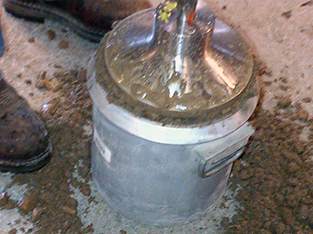
Density and Air Content of Roller-Compacted Concrete
Roller-compacted concrete is used in the construction of dams and spillways as well as for highway road base material and wearing surfaces on some roads and parking lots. A proposed new ASTM standard will provide a test method for determining the density and air content of roller-compacted concrete.
Once approved, WK42461, Test Method for Density (Unit Weight) and Air Content (Pressure Method) of Freshly Mixed Roller-Compacted Concrete, will be used by testing laboratories, government agencies and construction contractors working in the water resources and pavement industries.
"Measured air content values are used in the design and control of RCC mixtures, especially when the mixture is air entrained," says Dennis Clute, an ASTM member and construction engineer, USDA-Natural Resources Conservation Service. "As with conventional concrete, RCC mixtures are proportioned on the basis of absolute volume. Lab mixes are tested for air content to determine the volume of air in the mix in order to adjust the mix proportions to yield one cubic yard."
Clute notes that RCC quality is proportional to its density. The theoretical density of an RCC mix can be compared to density values obtained by WK42461 to verify that the mix is well-proportioned. If the measured density is much less than that of the theoretical density, it may be necessary to change aggregate gradation or add more fine material to the mix.
WK42461 is being developed by Subcommittee C09.45 on Roller-Compacted Concrete, part of ASTM International Committee C09 on Concrete and Concrete Aggregates. All interested parties are invited to join the standards developing activities of C09.
CONTACT Technical Information: Dennis N. Clute, P.E., National Design, Construction and Soil Mechanics Center • Fort Worth, Texas • Phone: 817-509-3765 | ASTM Staff: Scott Orthey • Phone: 610-832-9730 | Upcoming Meeting: Dec. 7-10 • December Committee Week • New Orleans, La.
 SN Home
SN Home Archive
Archive Advertisers
Advertisers Masthead
Masthead RateCard
RateCard Subscribe
Subscribe Email Editor
Email Editor